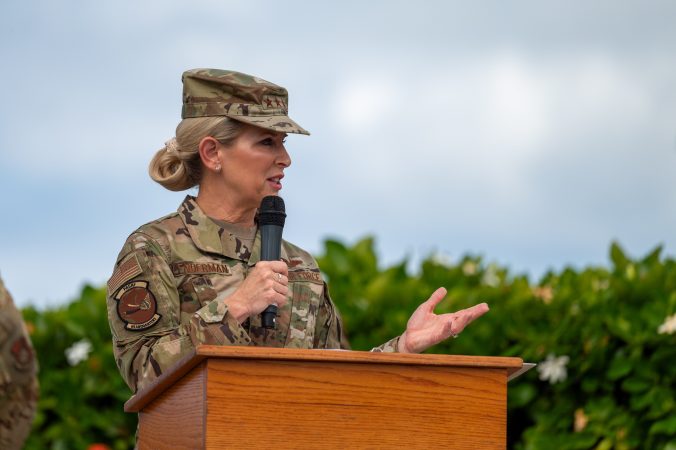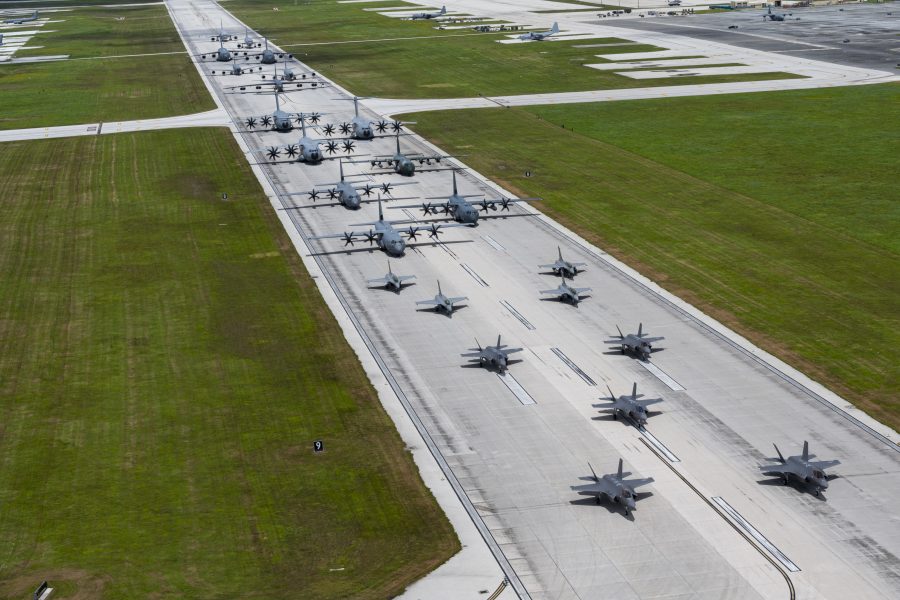Editor’s Note: This story was updated Oct. 25 to include the official name of REFORPAC.
REFORPAC, the large-scale exercise in the Pacific planned for summer 2025, will be on a scale unseen by the Air Force in recent memory: nearly 300 aircraft spread across 25 locations.
Lt. Gen. Laura L. Lenderman, deputy commander of Pacific Air Forces, detailed the size of the exercise during a keynote address at the AFCEA TechNet Indo-Pacific conference on Oct. 23.
“The goal is to integrate and experiment with logistics, sustainment, and enabling capability to bring fifth-gen fighters, command and control aircraft, and airlift and air refueling into the Western Pacific at speed and scale, with approximately 25 operating locations, almost 300 aircraft, and sister services and partner nations involved,” Lenderman said.
If the Air Force meets those numbers, REFORPAC—short for “Resolute Force Pacific” and sometimes referred to as “Return of Forces to the Pacific”—will significantly outstrip other major exercises the service has held in recent years in terms of number of aircraft and operating locations:
- Northern Edge, a PACAF-led exercise, featured more than 150 aircraft across Alaska in May 2023;
- Mobility Guardian 23, the large-scale Air Mobility Command exercise held in the Indo-Pacific last summer, featured 70 aircraft spread across multiple locations
- Cope North, PACAF’s largest annual multilateral exercise, had 85 aircraft across six airfields in February;
- Bamboo Eagle, a new large-scale exercise focused on the eastern Pacific, had around 150 aircraft at approximately 12 locations in June.
- Valiant Shield, one of the U.S. military’s largest exercises that features all six services, had more than 200 aircraft in 2022. Officials did not say how many were in the 2024 exercise.
Even Air Defender, the largest air exercise in NATO history held last June, had 250 aircraft, including 100 U.S. planes.
Lenderman also said the Air Force will use the exercise to focus on Agile Combat Employment, the operational concept in which small teams of Airmen deploy to remote or austere locations, generate airpower, and move again quickly as needed.
“We’re conducting multiple simultaneous ACE operations, and it’s an opportunity to refine our capabilities, strengthen our partnerships, test and stress ACE, and shift interoperability into interchangeability,” the general said.

ACE originated with PACAF, and leaders have stressed its importance in a region where the Air Force may need to “island-hop” or operate from locations with World War II-era airfields.
Air Force Chief of Staff Gen. David W. Allvin said in August that REFORPAC will include elements from U.S. Strategic Command; U.S. Northern Command; U.S. Indo-Pacific Command; and Air Mobility Command, and that it will dovetail with other major exercises like Bamboo Eagle and Talisman Sabre, a large biennial Australian-U.S.-led event.
Officials say REFORPAC is just one in a series of large-scale exercises the Air Force will implement in the coming years as the service attempts to reorient itself for great power competition against China and Russia.
Service leaders say that shift has to be done with urgency and speed given the pressing nature of the threat.
“Time is not on our side when it comes to offensive and defensive operations, logistics, sustainment, command and control, or battle management,” Lenderman said. “We no longer have the luxury of long-term development for perfect solutions.”
Instead, exercises like REFORPAC will help the Air Force identify stress points and innovative solutions to challenges—and Lenderman wants industry to help.
“What we ask of you is to bring your best ideas, bring your concepts, bring your newest technologies, bring your ready kits to the Indo-Pacific theater at a level ready for experimentation,” she said. “Help us challenge our status quo. Help us stress Agile Combat Employment and our ability to command and control and execute contested logistics and our ability to perform dynamic force movements throughout the theater.”
